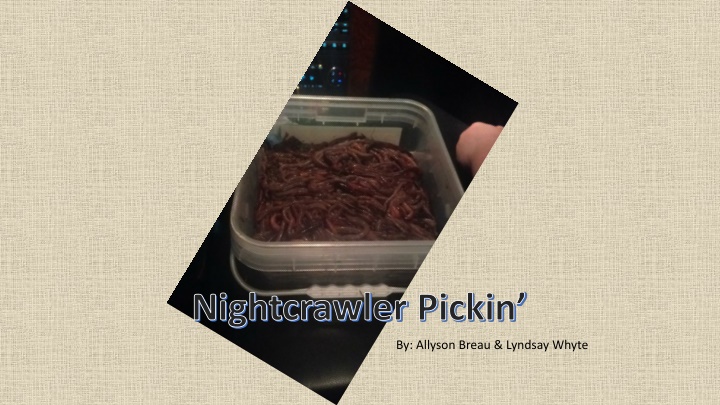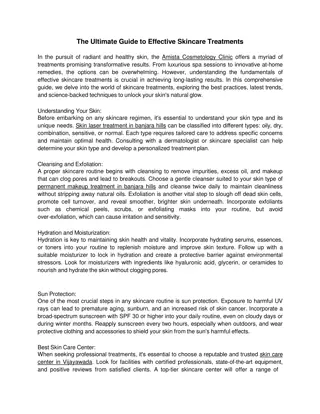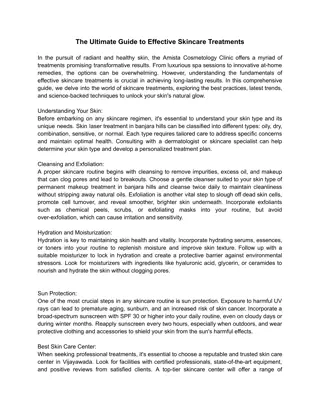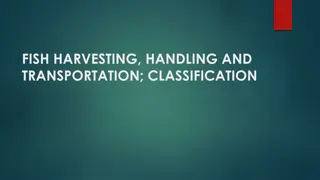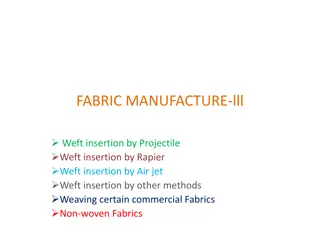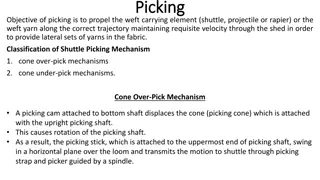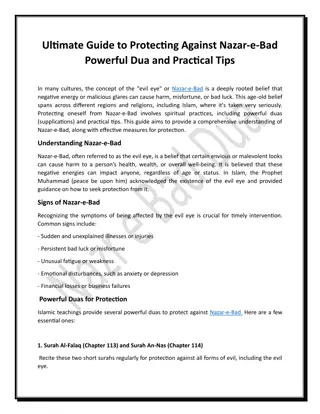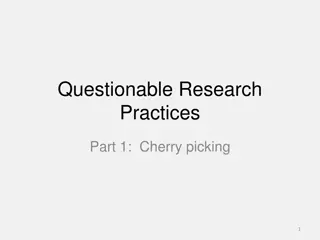Ultimate Guide to Nightcrawler Picking: Tips and Techniques
Discover insider tips on when and where to find nightcrawlers, how to handle them properly, and ensure their well-being. Learn effective collection and storage methods, along with insights into what nightcrawlers eat. Enhance your nightcrawler picking skills with this comprehensive guide.
Download Presentation

Please find below an Image/Link to download the presentation.
The content on the website is provided AS IS for your information and personal use only. It may not be sold, licensed, or shared on other websites without obtaining consent from the author.If you encounter any issues during the download, it is possible that the publisher has removed the file from their server.
You are allowed to download the files provided on this website for personal or commercial use, subject to the condition that they are used lawfully. All files are the property of their respective owners.
The content on the website is provided AS IS for your information and personal use only. It may not be sold, licensed, or shared on other websites without obtaining consent from the author.
E N D
Presentation Transcript
Nightcrawler Pickin By: Allyson Breau & Lyndsay Whyte
When to look for them In the evening after a good rainfall. Rain during the day will saturate the soil and help drive nightcrawlers to the surface at night.
What to do Sawdust can be used to make it easier to grasp the worms. If you choose not to use saw dust, then it will be harder to grasp them. If you by accident rip one in half then DO NOT put it with the worms you already have as it will kill the other worms
Worms usually only come a little more then half way out of the ground and leave their tail in the ground for easy escape if alarmed.
Why??? Rain during the day will saturate the soil and help drive nightcrawlers to the surface at night.
Where to look and where not to look Avoid searching in high grass. If you touch the grass it will scare the nightcrawlers, causing them to squirm back into the ground. Flat dirt or low grass areas will be much more successful.
Collecting Night Crawlers Make sure you have a few containers when out picking. DO NOT over flow the buckets because it can injure and smother the worms at the bottom of the bucket! Empty your bucket into storage containers frequently to keep your crawlers ALIVE
Proper Storage of Crawlers Store in plastic or Styrofoam containers with little holes on the top. It will allow moisture to escape but will keep the worms in the container. If you put them in a big bucket make sure that you put a damp dish/paper towel over the top of them to keep the moisture.
What They Eat! It all depends on where they live. They eat a variety of organic materials such as dead grass and leaves that fell off trees. Bacteria, fungi and algae. You can feed them fruits, vegetables, plant remains Corn Meal
